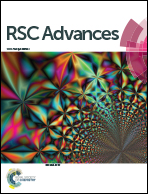An insight into cochleates, a potential drug delivery system
Abstract
Cochleates, a type of lipid based drug delivery system, are solid particulates made up of large continuous lipid bilayer sheets rolled up in a spiral structure with little or no internal aqueous phase. These nano-sized or sub-micron sized structures are generated on fusion of negatively charged liposomes with metal cations. They are efficient in encapsulating drug molecules that are hydrophobic and hydrophilic; positively charged as well as negatively charged. The interior of a cochleate structure remains substantially intact irrespective of outer harsh environmental conditions or enzymes. Cochleate technology is applicable for administration through parenteral, topical as well as oral routes and can be formulated in liquid or powder form. Cochleates have been reported to improve the oral bioavailability; improve the safety of the drugs by decreasing side effects and increasing drug efficacy; all of which lead to enhanced patient compliance. This review article highlights the important aspects of cochleates such as their structure, properties, methods of preparation, stability, advantages, applications and current status. The information provided herein should help formulators in judiciously selecting cochleate technology for delivery of drugs.


 Please wait while we load your content...
Please wait while we load your content...